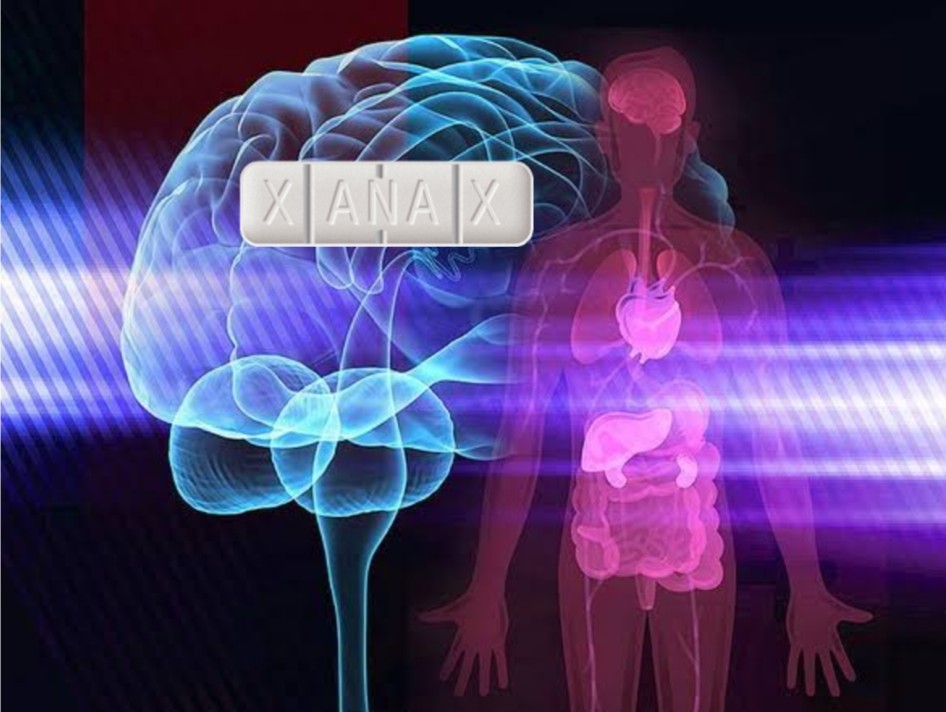What Does Xanax Feel and Taste Like? 15 Things To Know

Xanax is a brand name for the medication alprazolam, it belongs to a class of drugs called benzodiazepines. It is primarily prescribed to treat anxiety disorders, panic disorders, and sometimes for the short-term relief of anxiety symptoms.
The Xanax brand was first approved by the United States Food and Drug Administration (FDA) in 1981. It was developed by the pharmaceutical company Upjohn (now a part of Pfizer) and quickly became one of the most commonly prescribed medications for anxiety and panic disorders.
Benzodiazepines, the class of drugs to which Xanax belongs, were introduced in the 1960s and revolutionized the treatment of anxiety disorders. Xanax gained popularity due to its fast-acting properties and high potency compared to other benzodiazepines. It quickly became one of the best-selling psychiatric medications in the United States.
Xanax is classified as a Schedule IV controlled substance in the United States, indicating its potential for abuse and dependence. It has a high potential for misuse and recreational use due to its sedative and calming effects. Consequently, its availability and use have been closely regulated to prevent abuse.
How it works
Xanax is a benzodiazepine, it works by enhancing the effects of a neurotransmitter called gamma-aminobutyric acid (GABA) in the brain. GABA is an inhibitory neurotransmitter that helps regulate the activity of neurons in the brain. It binds to specific receptors in the brain, causing a decrease in neuronal excitability and reducing the transmission of nerve signals. This has a calming and sedating effect on the brain and can help alleviate anxiety symptoms.
Xanax enhances the action of GABA by binding to specific sites on GABA receptors, known as GABA-A receptors. This binding enhances the inhibitory effect of GABA, making it more effective in reducing the activity of certain brain cells. By increasing the activity of GABA, Xanax can help to reduce feelings of anxiety.
What does Xanax Feel and taste Like?
In terms of how Xanax feels when taken as prescribed, it typically induces a sense of relaxation, calmness, and sedation. People often describe the effects of Xanax as soothing, tranquilizing, and mildly euphoric. However, it’s important to note that the specific experience can vary from person to person, and some individuals may not experience any euphoria at all.
Xanax tablets are usually small and come in various shapes and colors depending on the dosage and brand. The taste of Xanax tablets can vary based on the manufacturer, but generally, they have a bitter or slightly chalky taste. The bitter taste can be attributed to the ingredients used in the formulation of the medication.
The bitter taste is primarily due to the presence of the active ingredient, alprazolam, which itself has a bitter taste. In order to manufacture the tablets, pharmaceutical companies use various binders, fillers, and coatings to ensure proper drug delivery and stability. Some of these additives can contribute to the unpleasant taste of Xanax.
Additionally, the bitter taste serves as a deterrent to prevent accidental ingestion by children or unauthorized use by individuals who do not have a prescription for the medication. While the taste may be unpleasant, it is important to swallow the tablet without chewing it to ensure the proper release and absorption of the medication. Some people may find the taste unpleasant, while others may not be bothered by it. It’s common for individuals to take Xanax with water or another beverage to help mask the taste.

What Does Xanax Do to Your Body?
Xanax affects the central nervous system (CNS) and has various effects on the body. Here are 10 key effects of Xanax:
1. Anxiety relief: Xanax is primarily prescribed for the treatment of anxiety disorders. It works by enhancing the effects of the neurotransmitter GABA, leading to a calming effect and reducing anxiety symptoms.
2. Sedation: Xanax has a sedating effect on the body. It can cause drowsiness and a feeling of relaxation, which can be helpful for individuals with anxiety or panic disorders.
3. Muscle relaxation: Xanax has muscle relaxant properties, which can help relieve muscle tension and reduce physical symptoms associated with anxiety, such as muscle tightness or spasms.
4. Anticonvulsant effects: Xanax has anticonvulsant properties, meaning it can help prevent or reduce the occurrence of seizures. It is sometimes prescribed for individuals with certain seizure disorders.
5. Sleep induction: Xanax can help promote sleep in individuals who have difficulty falling asleep or have insomnia related to anxiety. Its sedating effects can aid in initiating and maintaining sleep.
6. Reduced agitation: Xanax can help calm individuals who are experiencing agitation or restlessness due to anxiety or related conditions.
7. Impaired coordination: Xanax can affect motor coordination and impair physical coordination and balance. This is one reason why activities requiring focus and coordination, such as driving or operating machinery, should be avoided while under the influence of Xanax.
8. Memory and cognitive effects: Xanax can cause short-term memory impairment and difficulties with concentration and attention. It can also slow down cognitive processes and reaction times.
9. Respiratory depression: Xanax, like other CNS depressants, can slow down the rate of breathing, particularly at higher doses. This effect is more significant when Xanax is used in combination with other sedatives or alcohol.
10. Dependence and withdrawal: Long-term use or misuse of Xanax can lead to physical and psychological dependence. Abruptly stopping or reducing the dose after prolonged use can trigger withdrawal symptoms, including anxiety, insomnia, irritability, and rebound anxiety.
What does Xanax do sexually?
Xanax, like other benzodiazepines, can have potential effects on sexual functioning. However, it’s important to note that these effects can vary among individuals, and not everyone may experience them. Here are some potential effects of Xanax on sexual function:
1. Decreased libido: Xanax can sometimes reduce sexual desire or libido in some individuals. It may dampen sexual interest and result in a decreased desire for sexual activity.
2. Erectile dysfunction: In some cases, Xanax can affect sexual performance by causing difficulty in achieving or maintaining an erection in males. This can lead to erectile dysfunction, making it challenging to engage in sexual activity.
3. Delayed ejaculation: Xanax may also prolong the time it takes to reach ejaculation in males. This can result in delayed ejaculation, making it more difficult to achieve orgasm during sexual activity.
4. Changes in orgasm intensity: Some individuals may experience changes in the intensity or quality of orgasm while taking Xanax. It is possible for orgasms to feel less intense or diminished.
5. Decreased vaginal lubrication: In females, Xanax can sometimes lead to decreased vaginal lubrication, which can cause discomfort or pain during sexual intercourse.
What does Xanax do to your eyes?
The direct effects of Xanax on the eyes are relatively limited. However, some indirect effects related to Xanax’s overall sedating and calming properties may impact the eyes. Here are a few potential effects:
1. Vision changes: Xanax can cause blurred vision or changes in visual perception in some individuals. This can occur as a result of the medication’s sedative and muscle-relaxing effects, which may affect the eye muscles responsible for focusing.
2. Pupil constriction: Xanax, like other benzodiazepines, can cause pupillary constriction (miosis). This effect is due to its impact on the autonomic nervous system. However, Xanax typically produces only mild or moderate pupillary constriction and is less likely to cause significant changes in pupil size compared to other substances that directly target the pupil.
3. Dry eyes: Although not a direct effect of Xanax, the sedating properties of the medication can lead to reduced tear production and contribute to dry eyes. Dry eyes can cause discomfort, redness, itching, and a feeling of grittiness.
What are the long-term effects of Xanax on your body?
Long-term use of Xanax can have several effects on the body. It’s important to note that the following effects can vary among individuals, and the severity and occurrence depend on factors such as dosage, duration of use, individual physiology, and other health conditions. Here are some potential long-term effects:
1. Tolerance: With prolonged use of Xanax, the body may develop tolerance, meaning that higher doses are needed to achieve the same therapeutic effect. This can lead to a gradual escalation of the dosage under medical supervision.
2. Dependence: Long-term use of Xanax can lead to physical and psychological dependence. Dependence means the body has become reliant on the drug, and discontinuing it abruptly or reducing the dose too quickly can result in withdrawal symptoms.
3. Withdrawal symptoms: When Xanax use is stopped suddenly or the dose is significantly reduced, withdrawal symptoms can occur. These symptoms may include anxiety, insomnia, irritability, tremors, sweating, restlessness, confusion, and, in severe cases, seizures. It is crucial to taper off Xanax gradually under the supervision of a healthcare professional to minimize withdrawal symptoms.
4. Cognitive impairment: Long-term use of Xanax, especially at higher doses, may be associated with cognitive impairment. It can affect memory, attention, concentration, and overall cognitive function.
5. Sedation and drowsiness: Prolonged use of Xanax can lead to persistent sedation and excessive drowsiness, impacting daily functioning and alertness.
6. Emotional blunting: Some individuals may experience emotional blunting or a reduction in emotional responsiveness while taking Xanax long-term. This can manifest as a decreased ability to feel pleasure, empathy, or emotional connection.
7. Interference with coordination and motor skills: Xanax can impair coordination, balance, and reaction times, increasing the risk of accidents, falls, or injuries, especially in older individuals.
8. Increased risk of falls and fractures: Xanax, particularly in elderly individuals, may contribute to an increased risk of falls and fractures due to its sedative and muscle relaxant effects.
9. Cognitive and behavioral changes: Prolonged use of Xanax has been associated with cognitive and behavioral changes, such as confusion, disinhibition, agitation, and paradoxical reactions like increased anxiety or aggression in some individuals.
10. Drug interactions and polypharmacy risks: Long-term use of Xanax increases the potential for drug interactions, particularly with other central nervous system depressants, opioids, and alcohol. Polypharmacy (taking multiple medications) can further increase the risk of adverse effects and drug interactions.
It is essential to work closely with a healthcare professional when using Xanax long-term. They can provide appropriate monitoring, help manage any potential side effects, and develop a tapering plan if discontinuation becomes necessary. Regular communication and follow-up with the healthcare provider are vital for ensuring the safe and effective use of Xanax.
It’s important to note that the effects of Xanax can vary among individuals, and these effects may be more pronounced with higher doses or when used inappropriately. Xanax should be used under the supervision of a healthcare professional and as prescribed. Regular communication with a healthcare provider is crucial to monitor the effects, potential side effects, and to adjust the treatment plan as needed.




